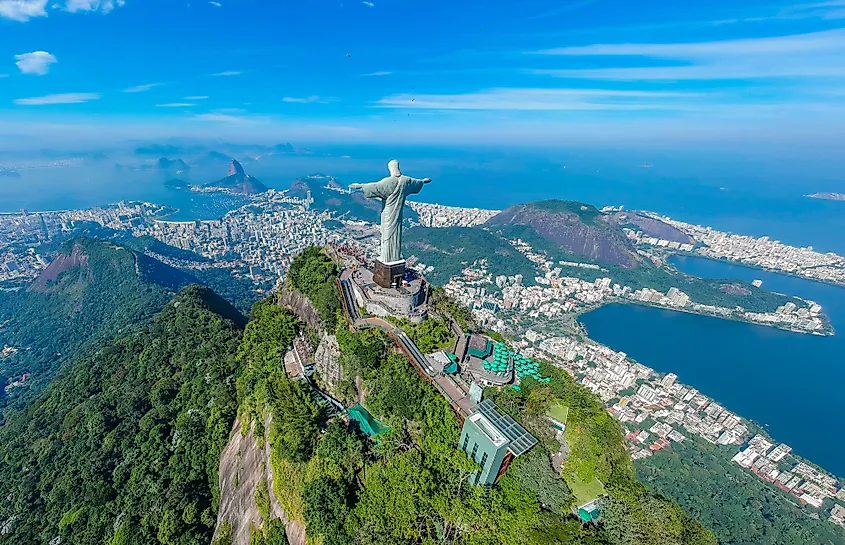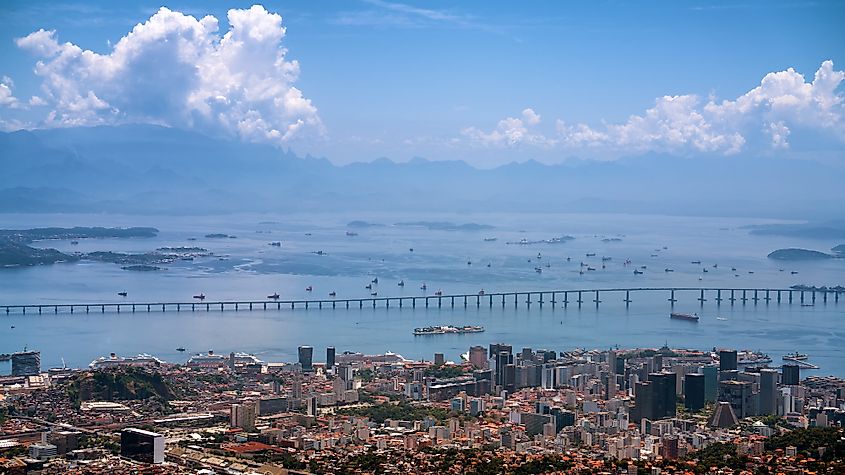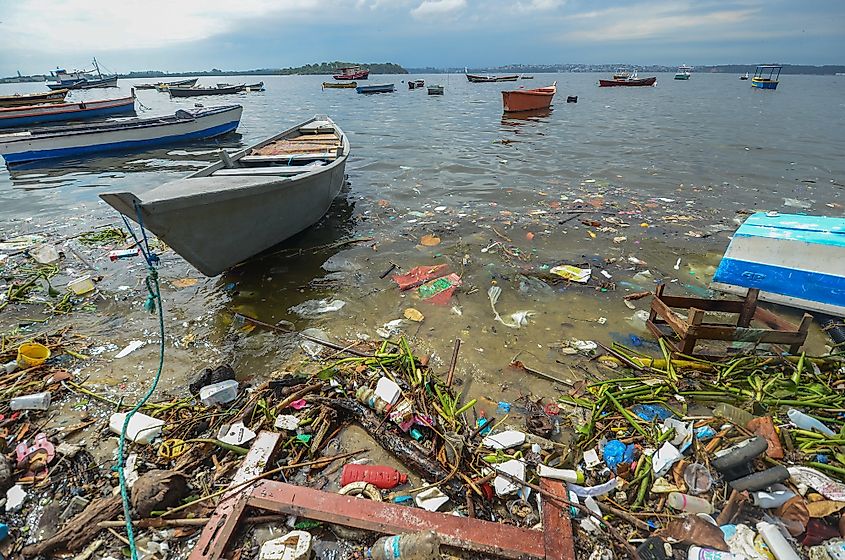
The Harbor of Rio de Janeiro, Guanabara Bay
Guanabara Bay is the name of the Harbor of Rio de Janeiro, in Brazil. Considered to be one of the seven natural wonders of the world, it is the largest natural bay on Earth, in terms of volume, and measures 412 square kilometers. It also has an average depth of around 8 meters, and a perimeter that measures 143 kilometres.
Guanabara Bay is an impressive natural wonder, but it sits alongside several major cities. On its western shore is the city of Rio de Janeiro as well as the city of Duque de Caxias. To the east lies both Niterói and São Gonçalo.
Islands

There are over 100 islands within Guanabara Bay, of various sizes and importance to the city. Some of the larger ones are connected to the mainland, and have prominent infrastructures and buildings built on them. Some of the larger islands include Governador island, Paquetá island, Cobras Island, Flores, Fiscal Island, Ilha da Boa Viagem, Villegagnon, and Fundāo, an artificially made island.
History
The first European explorers to reach the bay were from Portugal, and they first came to the bay in 1502. Initially, the area was dubbed Ria de Janerio meaning January lagoon, but with the words rio - river and ria - lagoon being so similar, the name was unintentionally changed to rio de Janeiro, for which the major city on the edge of the bay was also later named.
Later, the French invaded the area in 1555 where they established a settlement, and built Fort Coligny on one of the nearby islands. In 1563, these French were driven out by the Portuguese, and naval reinforcements in the shape of Santa Cruz, São João, Lajes and Villegaignon forts were set up around the bay to protect it from further invasion. Today, the primary language in the region, and much of Brazil, is still Portuguese.
Infrastructure in and Around the Bay

The wide expanse of this huge bay is crossed by the Rio-Niteroi Bridge, which runs for 13.3 kilometers across the smaller opening of the bay. It connects the major cities of Rio and Niteroi for ease of travel from one place to the other. Additionally, smaller bridges reach from the main shore to the two largest islands, Fundão and Governador.
The harbor is also located on the bay, as well as the port of Rio de Janeiro. Significant shipping and boating traffic passes in and out of the harbour, while leisure boats and ferries run within the bay, and back and forth to various islands.
The shores of the bay also have a number of important buildings and facilities that service Rio and the area. Both of the airports in the city are here - Santos Dumont Airport is just outside Rio’s downtown core, and Galeão - Antônio Carlos Jobim International Airport is on Governador Island.
Similarly, the Federal University of Rio de Janeiro can be found on Fundão Island.
Environment
Guanabara bay was once a thriving biologically diverse area, like much of the rest of Brazil. And abundance of animals and plants grew and lived along the shore, while any number of marine animals occupied or visited the bay.
Species naturally found in the area include(d) dolphins, sea turtles, whales, and a wide variety of fish, but populations have dropped significantly in the last few decades.
Threats and Pollution

Unfortunately most of the animals and marine life that once lived and thrived in the bay has all but left. Pollution, deforestation, human development, and industry have caused a drastic drop in biodiversity in the area, and the waters have actually become rather unclean. Roughly 70% of the sewage from the major city of Rio (which is home to more that 12 million people) spills directly into the bay. And though it was closed in 2012, the world’s largest landfill known as Jardim Gramacho was located directly across from Guanabara Bay, and caused a great deal of toxic leakage and runoff. Similarly, there have been some major oil spills in the harbor, as recently as 2000.
Like in many areas of Brazil, a lack of conservation efforts, as well as large scale industry has negatively affected wildlife and natural habitats However, it is the hope that as knowledge of these tragedies increases, more and more will be done to try and reverse the effects of human growth and pollution on these areas.
This gorgeous natural wonder of the world is an impressive display of the Earth’s natural beauty and size. Though human expansion has caused major threats to the area, it remains a place of wonder. With education and dedication, it is the hope that the bay can return to its former glory and beauty, and the negative effects of pollution and industry can slowly start to be reversed.











